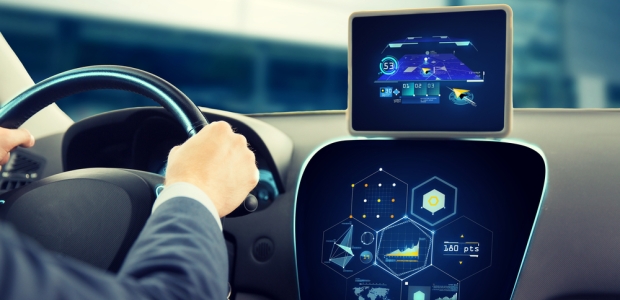
IIHS Tests Find Issues with Advanced Vehicle Technologies
David Zuby, IIHS chief research officer, said "it's important to note that none of these vehicles is capable of driving safely on its own. A production autonomous vehicle that can go anywhere, anytime isn't available at your local car dealer and won't be for quite some time. We aren't there yet."
Testing done by the Insurance Institute for Highway Safety is helping the organization create a consumer ratings program for advanced driver assistance systems. The testing also showed adaptive cruise control and active lane-keeping have some issues, what IIHS called "variable performance in typical driving situations, such as approaching stopped vehicles and negotiating hills and curves. The early results underscore the fact that today's systems aren't robust substitutes for human drivers," an institute Status Report pointed out Aug. 7.
The testing asked whether these in-vehicle systems handle driving tasks as humans would. Sometimes they do, but not always: "When they didn't perform as expected, the outcomes ranged from the irksome, such as too-cautious braking, to the dangerous, for example, veering toward the shoulder if sensors couldn't detect lane lines."
Adaptive cruise control maintains a set speed and following distance from the vehicle in front. It is designed to slow for cars ahead and can come to a full stop but may not react to already-stopped vehicles, according to the the report, and it does not react to traffic signals or other traffic controls. Active lane-keeping provides sustained steering input to keep the vehicle within its lane, but drivers must continue to hold the steering wheel.
IIHS noted on SAE International's scale of zero autonomy to Level 5 full autonomy, the combination of ACC and active lane-keeping is Level 2. They can assist with steering, speed control, and following distance, but the human driver is still in charge and must stay on task. "The new tests are an outgrowth of our research on Level 2 autonomy," said Jessica Jermakian, IIHS senior research engineer. "We zeroed in on situations our staff have identified as areas of concern during test drives with Level 2 systems, then used that feedback to develop road and track scenarios to compare vehicles."
The testing involved a 2017 BMW 5-series with "Driving Assistant Plus," a 2017 Mercedes-Benz E-Class with "Drive Pilot," 2018 Tesla Model 3 and 2016 Model S with "Autopilot" (software versions 8.1 and 7.1, respectively) and a 2018 Volvo S90 with "Pilot Assist" were evaluated. All of these vehicles have automatic emergency braking systems rated superior by IIHS.
The report discusses stopped-vehicle tests of ACC technology. On the track, the 5 series, E-Class, and Teslas braked to avoid the target vehicle, even though the owner's manuals for all test vehicles warn that ACC may not brake when it encounters vehicles that are already stopped when they come into sensor range. In road testing, there were times when each vehicle except the Model 3 failed to respond to stopped vehicles ahead.
"At IIHS, we are coached to intervene without warning, but other drivers might not be as vigilant," Jermakian said. "ACC systems require drivers to pay attention to what the vehicle is doing at all times and be ready to brake manually."
Testing of lane-keeping systems involved six trials with each vehicle on three different road sections. Only the Model 3 stayed within the lane on all 18 trials, according to the report, which said the Model S "was similar but overcorrected on one curve, causing it to cross the line on the inside of the curve in one trial. None of the other systems tested provided enough steering input on their own to consistently stay in their lane, often requiring the driver to provide additional steering to successfully navigate the curve." It also said that some of the driver assistance systems that rely on seeing road markings to keep vehicles in their lanes were sometimes baffled by hills. As a vehicle crests a hill, lane markers on the road beyond are obscured.
David Zuby, IIHS chief research officer, said, "We're not ready to say yet which company has the safest implementation of Level 2 driver assistance, but it's important to note that none of these vehicles is capable of driving safely on its own. A production autonomous vehicle that can go anywhere, anytime isn't available at your local car dealer and won't be for quite some time. We aren't there yet."